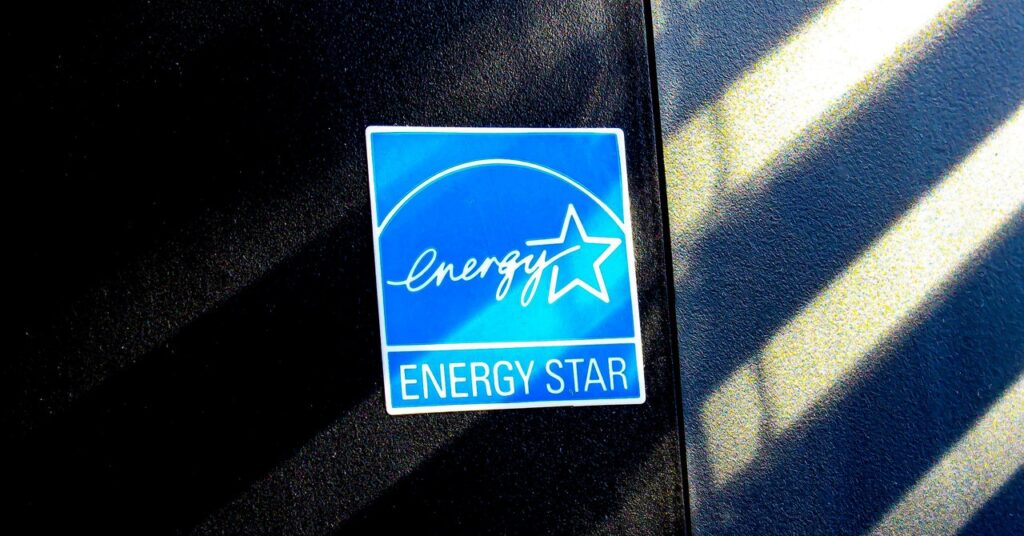What Is Energy Star and How Does It Save You Money?
WIRED spoke with the Environmental Protection Agency to learn more about the government’s energy efficiency program….


Using less electricity is good for the environment, and it’s good for your pocketbook when those utility bills roll around. The next time you’re buying a computer, refrigerator, or TV, you may see an Energy Star logo slapped on the side of the device and think, “I guess this is a good sign, but what exactly does it mean?”
The Energy Star program is run by the United States government, under the direction of the Environmental Protection Agency. Curious about the significance of that little blue sticker, I met with Katharine Kaplan, who is the manager of product development at Energy Star and has worked at the EPA for over a decade. To help you better understand Energy Star, we discussed the program’s history, mission, and how it can help you save money.
The Green Lights program of 1991 was Energy Star’s predecessor, and it focused primarily on energy use by lightbulbs. The government launched Energy Star a year later to examine the electricity-guzzling computers and CRT monitors operated by more and more office workers at the time. The program was enacted through the Clean Air Act, which “directed the EPA to use non-regulatory approaches to reduce pollution,” says Kaplan.
Why would the government decide to try a non-regulatory approach, in addition to product regulation? Let’s compare the government to a teacher in a classroom. Sure, you need to have disciplinary measures in place for the problem students, but you also want to have incentives for your best students: pizza parties, extra recess, shiny stickers.
“When we set our Energy Star requirements, we’re aiming for the top 25 percent of products on the market. Of course, we’re a market-transformation program,” says Kaplan. “So that means that we set the bar, and then, thanks to lots of innovation from manufacturers, the bar needs to be lifted.”
OK, that makes sense, although maybe we’re getting a little ahead of ourselves. What does that sticker mean? It essentially identifies products that use less energy than similar devices. Efficiency is the name of the game, and Kaplan argues that it doesn’t require any sacrifices in quality. “You’re getting the features and functionality that you want,” she explains. Energy Star has multiple commercial initiatives for businesses; this explainer highlights the consumer side of things.
So back to those stickers. When shopping for household appliances, you may also encounter large yellow tags on certain items. These labels are from EnergyGuide, a program run by the Federal Trade Commission, not the EPA. An Energy Star sticker denotes the top of the class, while an EnergyGuide tag helps you understand at a glance approximately how much energy a product will use in a year.
Certifying the best devices, Energy Star covers a wide range of products. While refrigerators and washing machines are obvious energy guzzlers, there is one recent addition to households that may get overlooked.
“Air cleaners,” Kaplan says, “operate for a large portion of the day, and they can use as much energy as a refrigerator. Some of these are little products, so you’d never think that this is a big energy user.” The Energy Star website includes a guide to help you choose an energy-efficient air purification system.




